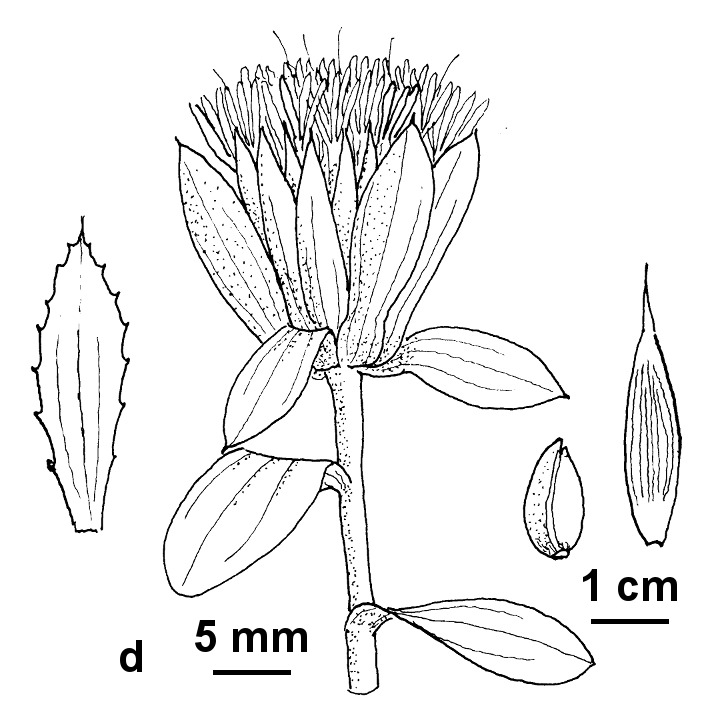Carthamus tinctorius
L. SafflowerAnnual, to 1 m high; stems pale, glabrous or minutely hairy. Leaves sessile, ovate to lanceolate, 2–12 cm long, 1–4 cm wide, acute, spine-tipped, base cuneate or obtuse, bright glossy green above and below, glabrous, margins more or less entire with long spines. Capitula solitary, 15–35 mm diam.; outer bracts spreading to deflexed, rigid, spine-tipped; inner bracts sometimes with leaf-like apex, erect. Corolla 20–25 mm long, bright orange. Cypselas 7–8 mm long, white, glossy; pappus usually absent, rarely a few minute scales. Flowers spring.
MuM, Wim, VVP, GipP, EGU, HSF. Also naturalised WA, Qld, NSW, Tas. Native to Europe. Occasionally spontaneous in Victoria as a garden- or crop-escape.
The flowers are sometimes used as a substitute for, or 'filler' with Saffron (derived from the stigmas of Crocus sativus L. in the Iridaceae).
Jeanes, J.A. (1999). Asteraceae. In: Walsh, N.G.; Entwisle, T.J., Flora of Victoria Vol. 4, Cornaceae to Asteraceae, pp. 652–666. Inkata Press, Melbourne.
 Spinning
Spinning




